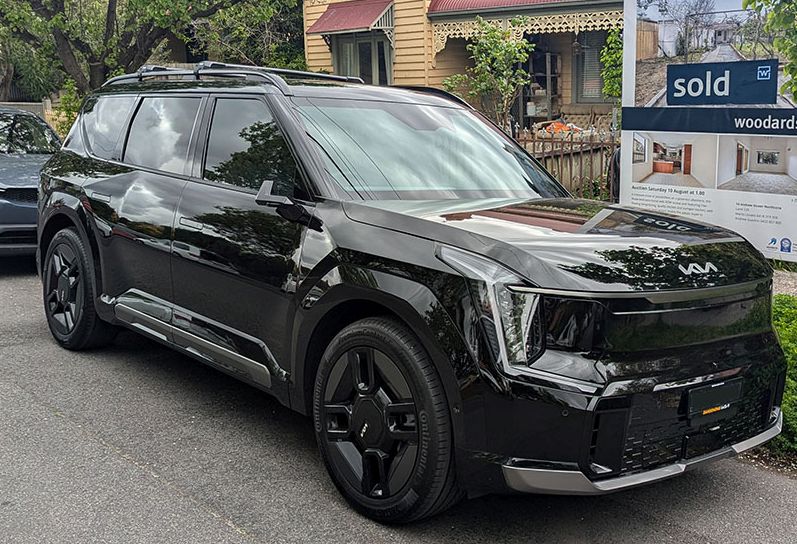As a travelling consultant offering residential energy efficiency measurement and improvement advisory services, one of my highest operating expenses is petrol. I travel over 30,000 kms per year, travelling from house to house across Victoria.
Discovering a way to reduce operating expenses sparked the idea to explore a high efficiency vehicle. My criteria are pretty narrow, I wanted to be able to do everything I could in my 4.0L V6 car, plus more, to justify the new car expense.
I needed room for a family of 5, towing capacity of over 2t for our yearly Easter trip with a hire caravan, positive brand association for my line of work, long range mileage, and importantly, ultra-low emissions and running costs.

We have a Kluger Hybrid in the family and that’s great. But it just doesn’t have the grunt when we need it. The new powerhouse iForce Max engine sparked some interest, but all the signs were that it exceeded my budget.
To help me decide, I turned to the Australian Electric Vehicle Association’s current EV Fact Sheets (available through at aeva.au/fact-sheets) to compare the specifications of current EV models that are on the market.
One model stood out, the Kia EV9. Long range battery, 7-seater, 2.5t towing capacity and through further research, likelihood of being future proofed for bi-directional charging. A huge bonus in supporting an all-electric home. It made perfect sense to me, it ticked all the boxes and while considering a home battery, developments in V2H sealed the deal.
The transition from ICE to EV was easy. The maiden voyage was a 100 km highway/city commute from Geelong to Northcote. Peak hour, and a 1h, 41 min travel time resulted in an average consumption of 5.5km/kWh in “Normal” mode, as opposed to Sport or Eco etc. Around 18 kWh consumption of the 100 kWh available in the long-range battery.
That would have cost me around $25 in my previous car. Charging the EV overnight, the new cost is $3.60 applying a 20c/kWh rate.
A recent off-piste commute had me travelling from Geelong to Colac, Coburg North, Brunswick East and return. This was going to be the true test as I wasn’t prepared with a full charge after travelling in and around Queenscliff the day before. I set out with 70% in my ‘tank’, I got 250 km into the trip when I reached my last stop.
I had 110 km remaining at peak-hour. I could have made it back with around 10% according to the live mileage, but not knowing the car and the traffic, I needed an extra 10% cushion just in case.
The 60 kW fast chargers were occupied, the 7 kW Type 2 was my only option. I added 2.64 kWh in 22 minutes, grabbed something to eat and ran the gauntlet in “Eco”. With a backup plan to detour to a fast charger on the M1 if things went pear-shaped, I received the 20% low battery warning close to home. Arriving with 17% remaining.
This car is a joy to drive every day of the week. It’s smooth, the tech is out of this world, it pulls when it needs to and it does everything, plus more, than a high-capacity ICE.
Range anxiety existed, but it was short lived. For travelling consultants like myself, long range batteries are the way to go and although I’ve been surviving with a 10 amp outlet in my garage for charging, a wall charger is certainly the way to go for day-to-day long range commutes.
Cal Forsyth is the Director of Ephe and is an accredited Residential Energy Efficiency Consultant specializing in Scorecard assessments, draught proofing and thermal imaging.

